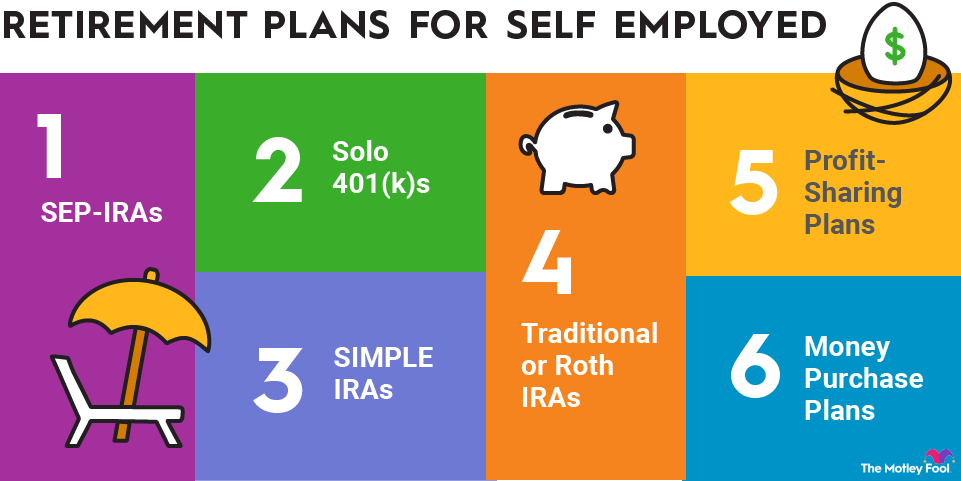As a self-employed individual, retirement savings can feel like a daunting task. With no employer-sponsored retirement plan, it’s up to us to take control of our financial future. However, with the right strategies and a little discipline, we can build a solid retirement nest egg. In this blog post, I’ll share my personal experiences and informative tips on how to save for retirement as a self-employed individual.
Before diving into retirement savings strategies, it’s essential to have a clear understanding of why saving for retirement is crucial, regardless of your employment status. As a self-employed person, the responsibility of managing your finances falls entirely on your shoulders. It’s a future that heavily relies on the income you generate during your active working years. Therefore, being proactive about retirement savings ensures financial security and stability during your golden years.
The first step towards retirement savings is to start early. Even if you’re just beginning your self-employment journey, it’s never too early to start planning for retirement. The power of compounding interest can significantly impact the growth of your retirement savings over time. By starting early, you allow your investments to grow and take advantage of the market’s ups and downs.
Next, it’s crucial to establish a retirement savings goal. Determine the amount you’ll need to maintain your desired lifestyle during retirement. Consider factors such as healthcare expenses, inflation, and any other specific needs you anticipate. Having a clear target will help guide your savings efforts and keep you motivated along the way.
As a self-employed individual, you have various retirement savings options to choose from. One popular option is an Individual Retirement Account (IRA). With an IRA, you can contribute up to a certain limit each year, and the earnings grow tax-deferred until you withdraw during retirement. Traditional IRAs offer tax deductions for contributions, while Roth IRAs allow tax-free withdrawals during retirement. Depending on your income level and tax situation, you can choose the most suitable type.
In addition to an IRA, consider setting up a Solo 401(k) or a Simplified Employee Pension IRA (SEP IRA). These retirement plans are specifically designed for self-employed individuals and offer higher contribution limits than traditional IRAs. A Solo 401(k) allows both employer and employee contributions, while a SEP IRA allows employers to contribute a percentage of their net self-employment income.
Managing cash flow is a common challenge for self-employed individuals. It’s crucial to set aside a portion of your income for retirement savings consistently. One strategy that has worked for me is treating retirement savings as a monthly fixed expense. By budgeting and automating contributions, you ensure that retirement savings become a priority rather than an afterthought. This approach eliminates the temptation to spend the money on immediate wants and keeps you disciplined towards achieving your long-term goals.
Another way to boost your retirement savings is to take advantage of tax benefits. As a self-employed individual, you can often deduct contributions made to retirement plans, reducing your taxable income. By consulting with a tax professional, you can maximize these deductions and potentially save more for retirement. Remember, every dollar saved on taxes can be directed towards your retirement savings.
Investing wisely is crucial when saving for retirement. A well-diversified portfolio, consisting of stocks, bonds, and other assets, can help grow your savings over the long term. However, it’s essential to consider your risk tolerance and investment knowledge when building your investment strategy. If you’re unsure about investing on your own, consult a financial advisor who can provide guidance based on your specific needs and goals.
In addition to traditional retirement savings options, consider exploring other avenues to supplement your retirement income. Real estate investments, for example, can provide a reliable source of passive income during retirement. Rental properties or real estate crowdfunding platforms can be viable options to consider. However, remember to thoroughly research and understand the risks associated with any investment before diving in.
Finally, self-employed individuals must regularly review and adjust their retirement savings strategies. As your income fluctuates and your business evolves, it’s essential to revisit your retirement savings goals and make necessary adjustments. Consider increasing your savings rate during prosperous times and lowering it during lean periods.
In conclusion, saving for retirement as a self-employed individual requires discipline, planning, and a proactive mindset. By starting early, setting clear goals, exploring retirement savings options, maintaining a consistent cash flow, taking advantage of tax benefits, investing wisely, and staying flexible, you can build a healthy nest egg for the future. Remember, your financial security during retirement is in your hands, so take control and start saving today.
